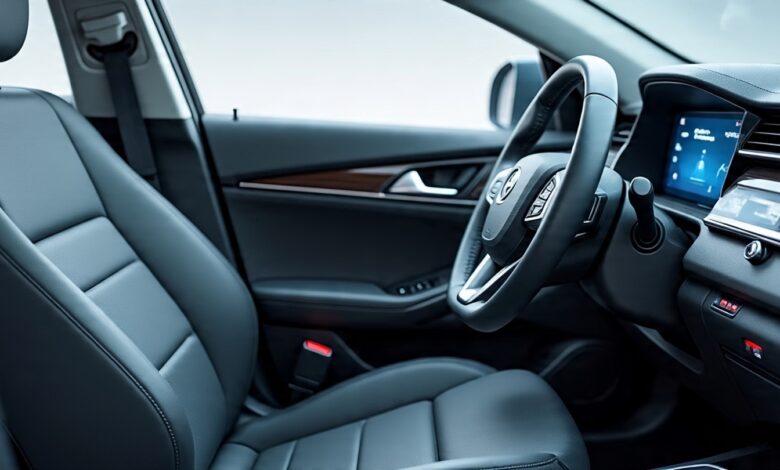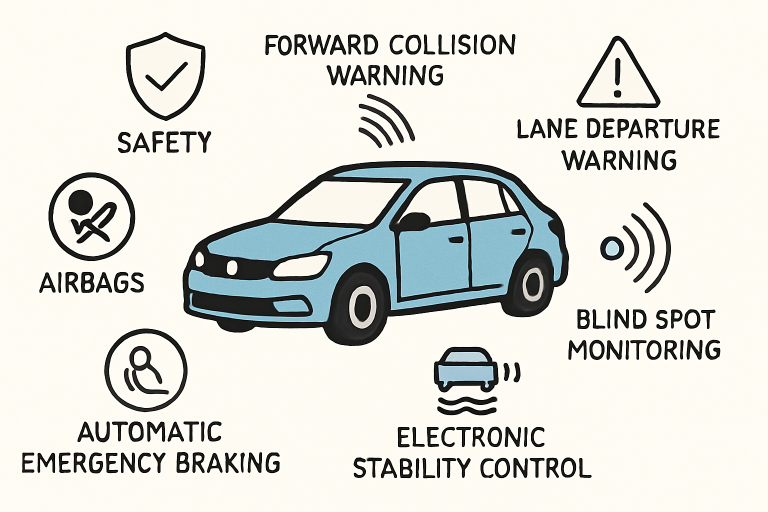Car Safety Features That Make a Difference
Discover the top modern car safety features that protect you and your loved ones. Learn which systems matter most for safer, smarter driving.

Choosing a vehicle is about more than aesthetics and performance—modern safety features can be the difference between an accident and a close call, or even life and death. As automakers innovate, advanced safety technologies are becoming increasingly accessible, revolutionizing the driving experience for everyone on the road. If you’re searching for a vehicle that puts safety first or looking to understand your car’s safety technology better, learn more about how the right features can protect you and your loved ones. Understanding which features contribute most to vehicle safety can empower you to make informed decisions about vehicle safety. Whether you drive daily or only occasionally, knowing which systems to prioritize ensures greater peace of mind. Today, safety isn’t just about buckling up—it’s woven into the very design and digital intelligence of your car.
Automatic Emergency Braking (AEB)
One of the most significant advancements in recent years is Automatic Emergency Braking (AEB). By utilizing advanced sensors, these systems rapidly detect potential collisions with other vehicles, pedestrians, or obstacles and automatically deploy the brakes if the driver fails to react in time. The National Highway Traffic Safety Administration (NHTSA) has reported substantial reductions in rear-end collisions involving AEB-equipped vehicles, resulting in crash rates being cut by up to 50%. This technology doesn’t just prevent crashes; it also reduces the severity of inevitable ones by minimizing the speed of impact.
Blind Spot Monitoring (BSM)
Blind Spot Monitoring constantly scans the lanes beside your vehicle and alerts you if another car is hidden from your mirror view. Typically, these alerts appear as lights on side mirrors, audible warnings, or steering wheel vibrations. According to IIHS data, lane-change crashes can drop by 14%, and injury-related incidents by 23%, when BSM is equipped. This feature is especially valuable during highway driving or in heavy traffic, offering an extra set of eyes where drivers need them most.
Lane Keeping Assist (LKA)
Lane Keeping Assist plays a crucial role in preventing unintentional lane departures, particularly during instances of inattention or drowsy driving. Cameras monitor the painted lane lines, and the system gently nudges the wheel or alerts the driver if the car begins moving out of its lane without signaling. Results from transport safety boards suggest LKA technology significantly decreases the risk of side collisions and road departures, contributing to a safer highway experience.
Adaptive Cruise Control (ACC)
Going beyond conventional cruise control, Adaptive Cruise Control adjusts your speed to maintain a safe distance from the car in front, even bringing your vehicle to a complete stop if necessary. Some systems work in stop-and-go traffic, automatically resuming driving when traffic moves forward. This not only reduces fatigue on long journeys but also minimizes the risk of rear-end accidents during sudden traffic slowdowns. The convenience and safety benefits combine to make ACC a favorite among frequent highway travelers.
Rear Cross-Traffic Alert (RCTA)
Parking lots and residential areas are hotspots for accidents caused by limited rear visibility. Rear Cross-Traffic Alert uses radar sensors to detect vehicles or people approaching from the sides as you back out of a space. Audible warnings or visual alerts notify you, providing precious seconds to react and avoid an unseen hazard. This feature makes reversing safer for everyone, especially in busy urban settings.

Driver Drowsiness Detection
Fatigue and distraction are significant contributors to vehicle crashes. Modern cars combat this danger with Driver Drowsiness Detection systems, which analyze steering corrections, blink rates, or head position to determine the driver’s alertness. When signs of drowsiness appear, the system recommends a break, significantly reducing the risk of accidents. Drowsy driving is responsible for thousands of accidents each year, making this technology essential for road safety.
Electronic Stability Control (ESC)
Electronic Stability Control is now standard on most modern vehicles, and for good reason. ESC monitors your direction relative to steering input and can gently brake individual wheels to help retain control during slides or skids. This is especially vital in inclement weather or emergency maneuvers, reducing the likelihood of rollovers and spinouts. NHTSA statistics indicate that ESC substantially reduces the risk of single-vehicle crashes, particularly for SUVs and light trucks.
Forward Collision Warning (FCW)
Forward Collision Warning serves as an additional safety feature by detecting potential frontal collisions through a network of cameras and radar. If it senses danger ahead, the system will issue urgent visual and audio alerts, giving drivers critical time to react. While FCW does not apply the brakes automatically, studies have shown that early warnings significantly increase a driver’s ability to avoid a crash or slow down in time, making every second count.
Staying informed about evolving car safety technology is vital for any modern driver. Equipping your vehicle with these nine essential features not only protects everyone in your car but also contributes to a safer driving environment for all. To ensure you’re investing in the most effective and up-to-date automotive safety, explore manufacturer options and review third-party safety ratings whenever possible.
Driving Toward a Safer Future
Today’s vehicles are more than just modes of transportation—they’re intelligent safety systems on wheels. As car manufacturers continue to integrate technology that anticipates, warns, and reacts faster than human reflexes, the driving experience is becoming significantly safer for all road users. From automatic braking to driver fatigue monitoring, these advancements reflect a shift toward proactive protection rather than reactive responses.
When shopping for your next vehicle, prioritize the safety features that align with your driving habits and typical environments. Whether navigating tight city streets or cruising long highways, there’s a feature designed to reduce your risk. As awareness and accessibility grow, these technologies are not just options—they’re necessities for responsible driving in a modern world.
Ultimately, embracing these innovations doesn’t just mean safer roads—it means fewer injuries, lives saved, and greater confidence behind the wheel. Investing in safety is an investment in peace of mind every time you drive.











